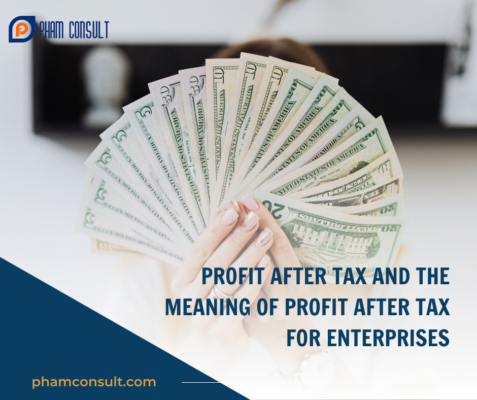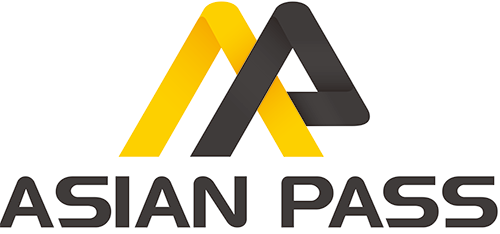Profit after tax is a very important item that many businesses are interested in. It is an item in the income statement. And it is also a financial measure to determine whether the business is operating effectively or not. So what is profit after tax, how to calculate profit after tax, what do businesses need to know… let’s analyze it in the article below.

1. What is profit after tax?
Profit after tax is known as the final profit, after subtracting the expenses and taxes that must be paid back to the state. In addition, profit after tax also has another name: “net profit” or “net profit”.
After one year of business operations, businesses will have to perform tax finalization to calculate and finalize the tax amount paid to the state. Based on the total amount payable, total revenue and expenses, we will calculate the business’s profit after tax. Also at the end of this year, the company’s shareholders will meet to discuss dividends. And make plans, plans, as well as decide on the amount of business reinvestment for next year.
Normally, after-tax profits will be used by shareholders to reinvest, pay dividends, put into bonus and welfare funds, etc. However, there are also a few businesses that do not pay dividends. If not spent on a certain fund stream, this is called undistributed after-tax profit. And this cash flow will be accumulated to the next period.
2. Factors affecting profit after tax
Factors that directly affect profit after tax include three main factors: Operating costs of the business, original import price of the product and corporate income tax. As follows:
- Costs to operate a business: The lower the cost of operating a business, the higher the after-tax profit will be. Therefore, businesses need to maximize operating costs for the business. Expenses should only account for about 30% of the business’s monthly revenue.
- Product’s original price: If the business has a lower original price, the higher the net profit it will receive. Therefore, businesses need to come up with the most optimal solution for the product’s original price. For example, businesses can search for suppliers with the cheapest price. However, not only focusing on profits, businesses must also ensure product quality. Balancing these two criteria, businesses will have a competitive advantage in products, as well as earn high net profits.
- Corporate income tax: Tax payable to the state is a mandatory obligation of every business. If a business wants to increase profits, it can increase working hours, improve production capacity and expand the development scale of the business.
3. Principles for distributing profits after tax
Each business will have different principles of financial management and profit distribution after tax. However, the principles of after-tax profit distribution must comply with regulations. Specifically:
- Deducted into financial reserve fund.
- Put into designated special funds.
- Based on the signed contract document, distribute profits to capital contributors as prescribed.
- Subtract expired prior year losses from pre-tax profits as prescribed.
- Contribute up to 30% to the business’s investment and development fund.
- Contribute to the company’s welfare and reward funds for employees.
- Contribute to the bonus fund for corporate management and controllers.
Finally, once the above contributions have been made, the remaining profits will be divided among the members. Or dividends will be distributed to shareholder members.
4. How to calculate a business’s profit after tax
Currently, the way to calculate profit after tax is applied by businesses according to the full formula below. Specifically:
Profit after tax = Total revenue – Total costs – Corporate income tax
In there:
- Total revenue: is all sales revenue from a business’s products or services calculated in a financial year. Costs are calculated by multiplying the total quantity of goods and services sold by the price of the goods and services.
- Total costs: are the expenses a business has to spend to create products and services. Some typical costs include: raw materials, warehouse rental costs, machinery costs, employee hiring costs, business operating costs, etc. And the total cost is calculated by the costs of Production and business + financial costs + other costs.
- Corporate income tax: is a direct tax, collected directly from the taxable income of businesses. Includes: income from production activities, business activities of trading goods or services and other income, regulated according to State law.
- If a business wants to increase its after-tax profit, it needs to optimize its total costs and corporate income tax. The net profit of the business will increase, and if vice versa, the net profit will decrease.
In addition, to know how much profit accounts for the total revenue achieved by the business, you can calculate it according to the net profit formula. Through this calculation formula, businesses can also evaluate whether the company’s business situation is truly effective and to what extent. The specific formula is as follows:
Net Profit = Total Revenue – (30% Cost + 10% VAT) – 20% Corporate Tax
Net profit is greatly affected by business operating expenses. Therefore, businesses that want to increase net profit need to find a way to optimize this cost. Currently, businesses are maintaining their operating costs at 5%.
5. Meaning of profit after tax data
Determining a business’s after-tax profit is very important to the business. Specifically:
- When a business determines its profit after tax, it also determines its business performance. In case the profit after tax is less than 0, this proves that the business is operating at a loss. And if profit after tax has a value greater than 0, it proves that the company is making a profit.
- Profit after tax reflects the cost control of the business. In case the ratio of profit after tax to revenue is high, the ability of the business to convert revenue into profit is better.
- The higher the after-tax profit, the larger the dividend distribution will be.
- Contribute to changing the valuation of corporate stock prices. Because the stock price of a business depends greatly on its profit after tax. Therefore, after-tax profit indices are often closely watched by investors. From there, evaluate the business’s ability to generate income over time.
To summarize, profit after tax is an extremely important factor and has many impacts on the assessment of a business’s business situation. Therefore, each business needs to have a plan to adjust and optimize indicators that affect their after-tax profits. Pham Consult hopes the above information will help your work
Comments




 VI
VI